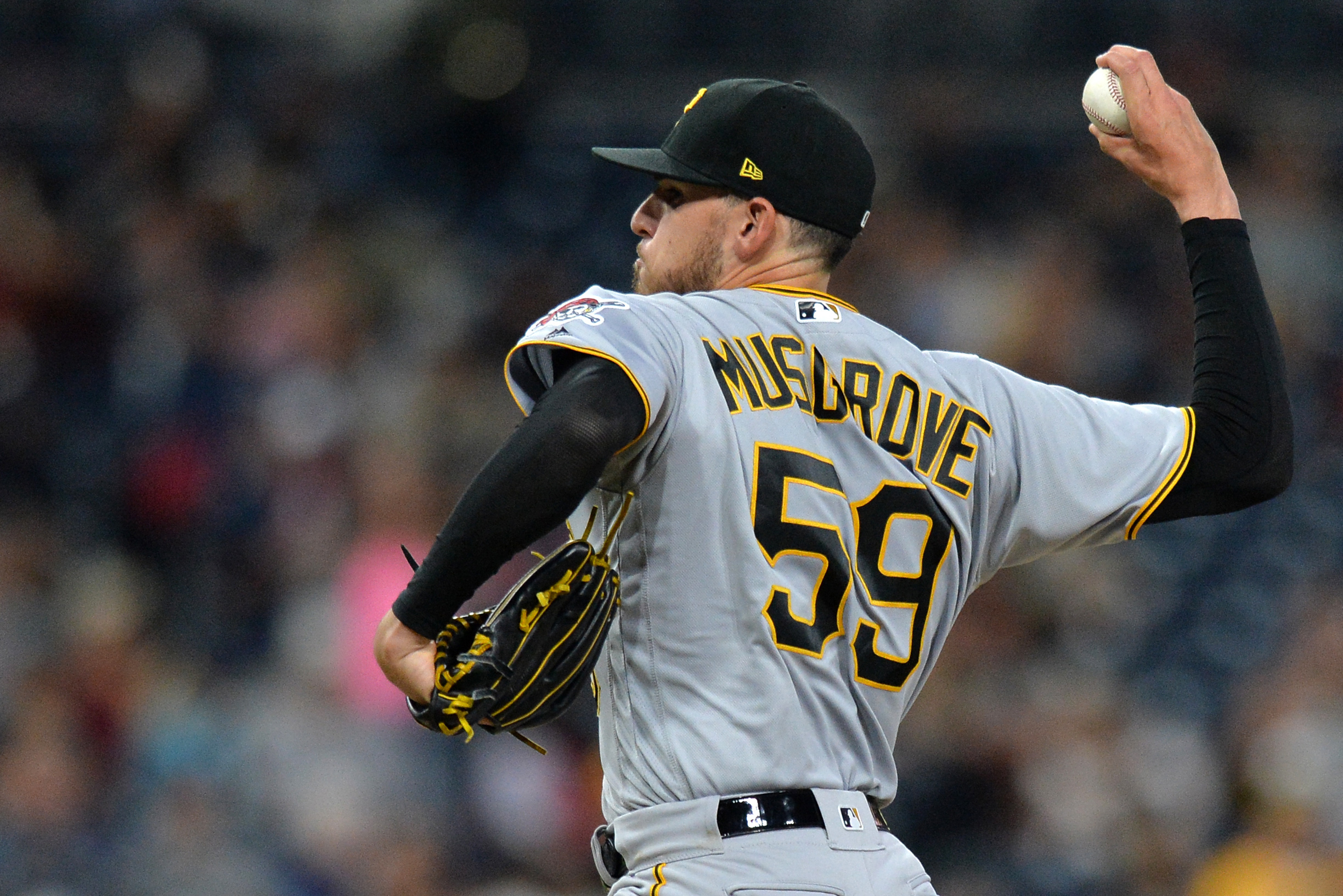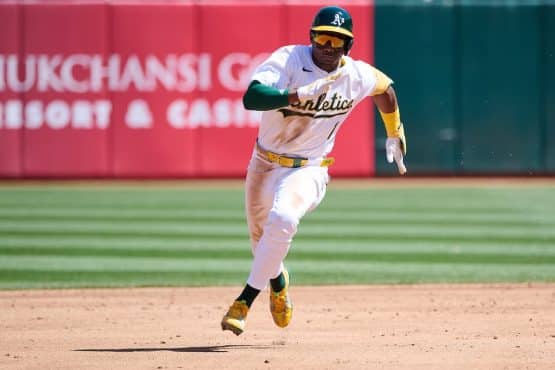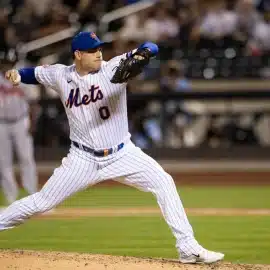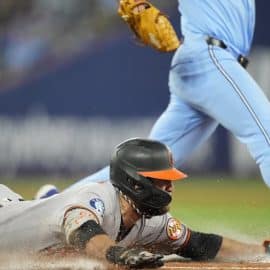Pittsburgh Pirates starting pitcher Joe Musgrove throws both a cutter and slider, a unique pitch mix in its own way, but perhaps he uses the one as a strike pitch and the other as a strikeout pitch.
On Friday, Musgrove tossed seven scoreless with five strikeouts in his home town against the San Diego Padres. He was efficient, only threw 88 pitches, and he got a swinging strike on 12.5 percent of his pitches (league average is 11.5 percent). You really couldn’t have asked for much more from him.
This came a couple of hours after I looked at his curveball, cutter, and slider trio, and in that start he threw his cutter 23 times (26 percent) and his slider 18 times (20 percent). Musgrove threw both pitches more than he had all season – was throwing the cut about 17 percent and the slider 15 percent before the start – and he found success.
The cutter generated three swinging strikes (13 percent) and the slider also had three swinging strikes, but that tallied to be 16.7 percent of the sliders. The slider generated more swinging strikes on a rate basis and three of the seven hits came against the cutter. That was essentially the basis of my analysis on Friday, the cutter has allowed too much damage and the slider has been good and needs to be thrown more.
But Alex Stumpf, of both Bucs Dugout and The Point of Pittsburgh, posed an interesting question. What if Musgrove uses his cutter as the pitch to get to two strikes (i.e the contact/get a strike pitch) and the slider as the put away pitch?
When I looked at last week, I noted that 20.99 percent of Musgrove’s cutters came with two strikes and 32.88 percent of his sliders came with two strikes, which would support Alex’s hypotheses. But that didn’t take into count the numbers from right-handed pitchers who throw both nor location of the pitches.
League and Musgrove Numbers
The first thing to look at is the right-handed pitchers who throw both sliders and cutters. Downloading the data from Baseball Savant since 2016 (year Musgrove made his debut) and narrowing it down to pitchers who threw at least 10 percent cutter and at least 10 percent slider (minimum 500 pitches thrown each season, data entering games June 30th).
Narrowing it down to right-handed pitchers there were 46 pitchers seasons, going 9, 17, 10 from 2016-present. The following numbers occurred:
On the surface this makes sense, the slider is used more as a strikeout pitch and the cutter is a form of the fastball. The cutter should have a higher slugging and a worse whiff rate (whiffs per swing). But compare them to Musgrove’s numbers:
Musgrove’s slider is much better than his cutter, something that was already known, but the difference is drastic, especially compared to the 2016-present pitchers with both pitches.
But, like Alex questioned, what if it’s because of the way he uses the two pitchers? Here’s the count breakdown for both the 46 pitcher seasons and 2018 Musgrove (note the grand totals are the totals for each respective column and row):
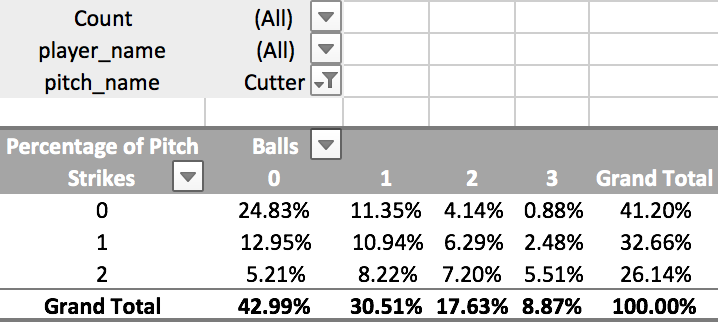
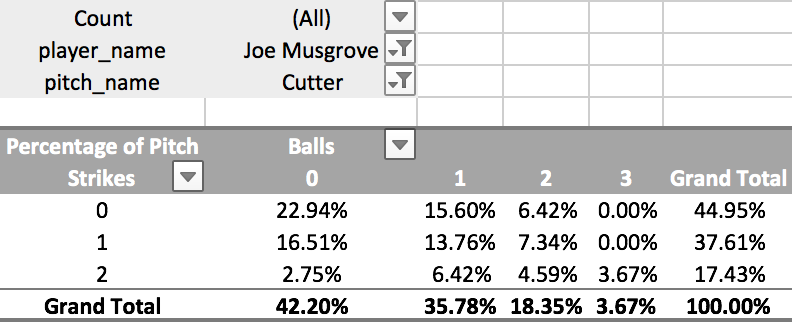
Looking at the two charts above, Musgrove throws his cutter more with one or two strikes than the sample does. While 73.86 percent of the samples cutters come before two strikes, 82.56 percent of Musgrove’s cutters have come before two strikes.
So while Musgrove isn’t a cutter dominant pitcher like some of those in our sample (Bryan Shaw), when he does use the pitch it’s used to really just get a strike.
But what about the slider?
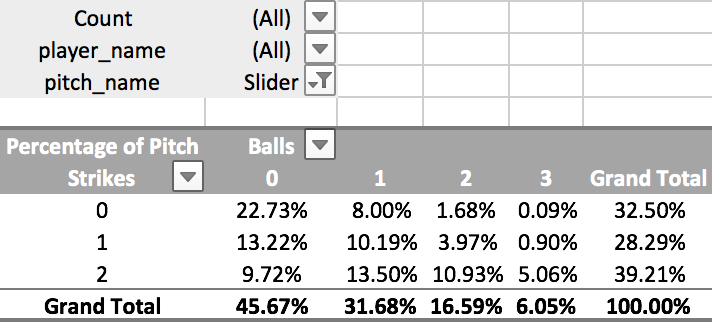
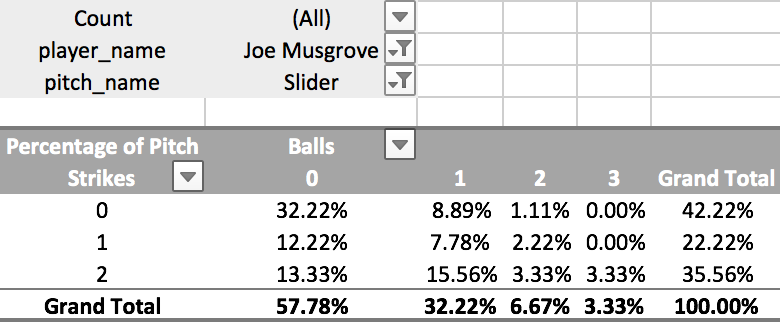
The sample throws the slider with two strikes more than Musgrove does, as only 35.56 percent of Musgrove’s sliders came with two strikes. However, the difference between the sample in two strikes (slider-cutter) is 13.07 percentage points. Musgrove, on the other hand, has a difference of 18.13 percentage points. This still matches with what Alex was suggesting with the usage.
But note the 0 strikes and 0 balls row and column. Nearly a third (32.22 percent) of Musgrove’s sliders came on the first pitch of the plate appearance. Only 22.94 percent of Musgrove’s of cutter’s come first pitch. The sample is at 22.73 percent of sliders and 24.83 percent of cutters come first pitch.
Maybe there’s some problems with pitch classification, especially given how similar the two pitches are and the way the Trackman system picks them up. That would explain some of the difference, but a 10 percentage point gap seems rather large.
Musgrove uses the slider as a get me over pitch and a strikeout pitch, but the cutter as a get a strike before there are two strikes on a batter. So what about pitch placement?
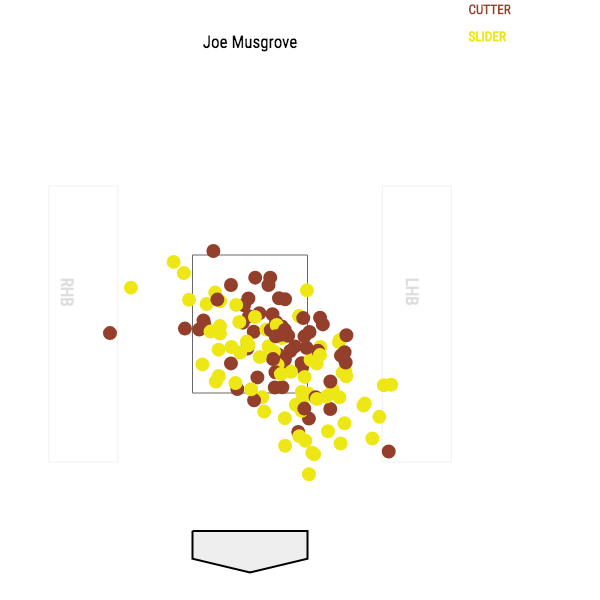
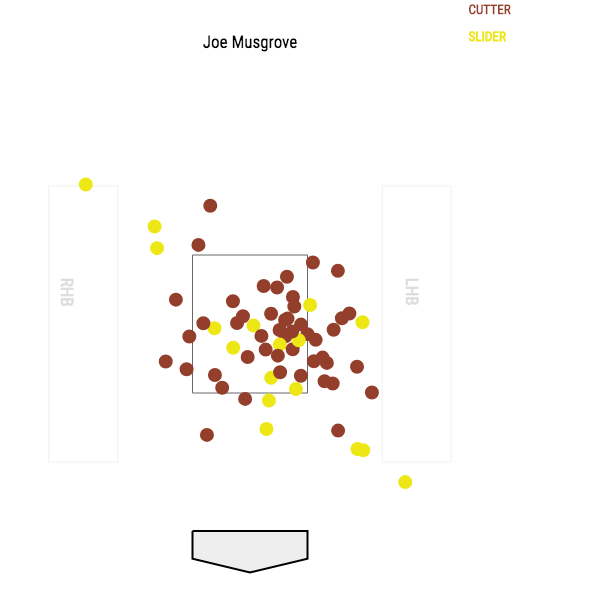
Looking at the top strike zone plot (Musgrove against RHB) shows a heavy diet of low and away with the slider low and away. Typical right-handed slider location. The cutter is a left up more in the zone more.
The same holds true against LHB, though there’s less sliders against those batters. Looking at the chart, it looks like Musgrove is trying to use the cutter up and in to let the ball cut into the hands and jam the batter. Like against RHB, Musgrove is letting too many pitches stay up over the middle of the plate, going back to being able to feel the pitches.
There seems to be some truth to Alex’s hypotheses to the way Musgrove utilizes his cutter and slider – though 42.2 percent of Musgrove’s sliders came with no strikes compared to 44.95 percent of his cutters coming with no strikes. While he seems likely to use the cutter to get ahead, he’s not afraid to use the slider to try to get the first strike.
The amount right-handed pitchers who utilize both pitches is still small due to the similarities. With Musgrove hanging must of his cutters, it would appear the feeling isn’t there yet while the slider continues to be a good pitch. Maybe as the season goes on, or even next season, the two pitches will play off each other with the cutter setting up the slider vice versa with the difference in speed giving an advantage.
There’s some merit to what Alex is saying, but overall it still appears that the reliance on the cutter over his slider remains to be a somewhat problem, especially with how often the cutter is hung as he is not able to run it away from RHB and jam it against LHB.
*Charts and numbers from Baseball Savant
Add The Sports Daily to your Google News Feed!
